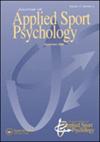为什么人们(经常)骑自行车?心理健康、人格特质和动机作为自行车运动目标决定因素的多变量研究
IF 2.7
2区 心理学
Q2 HOSPITALITY, LEISURE, SPORT & TOURISM
引用次数: 0
摘要
本文章由计算机程序翻译,如有差异,请以英文原文为准。
Why do people cycle (a lot)? A multivariate approach on mental health, personality traits and motivation as determinants for cycling ambition
Abstract Both recreational and competitive cycling such as strenuous ultra-cycling have grown in popularity over the last decades. Still, the underlying psychological predictors and their interplay with mental health are unknown. We therefore examined the psychological determinants and health outcomes related to the cycling ambitions of 2,331 international cyclists ranging from commuters via leisure to competitive ultra-cyclists. First, groupwise analysis showed that social and external motives, cycling-induced pain affinity, sensation seeking, benign masochism, low neuroticism, openness, conscientiousness and prior mental health problems most clearly differed between the types of cyclists, with values increasing by level of ambition (commuting vs. leisure vs. competitive). Yet, even within groups, we observed a strong variation of ambition. To capture these nuances, we created a path model with cycling ambition as a latent variable based on five indicators (e.g, frequency of cycling, following a training plan). Path analysis confirmed that social and external motives were important determinants of cycling ambition, partly mediating the effects of masochism and sensation seeking. Furthermore, while partly driven by prior mental health problems, cycling ambition positively predicted current mental health, suggesting that cycling may be a safe way to challenge oneself and potentially serves as a strategy to overcome psychopathological episodes. Longitudinal and qualitative research could follow up on some of the causal relationships proposed in the present model, particularly with regard to ambitious cycling functioning as a potentially unconscious self-therapeutic behavior. Lay summary: Cycling is currently more popular than ever. To understand who cycles for which reason and with which consequences, we surveyed cyclists of various ambitions ranging from commuting via leisure to competitive ultra-cycling about their pain affinity, benign masochism, sensation seeking, motives for cycling, and mental and physical health.
求助全文
通过发布文献求助,成功后即可免费获取论文全文。
去求助
来源期刊
CiteScore
6.90
自引率
9.40%
发文量
39
审稿时长
>12 weeks
期刊介绍:
The Journal of Applied Sport Psychology (JASP) is a refereed journal designed to significantly advance thought, theory, and research on applied aspects of sport and exercise psychology. Submissions such as experimental studies, qualitative research, correlational studies, case studies, position papers, critical reviews, theoretical developments specific to applied research conducted in sport and/or exercise settings, or having significant applied implications to sport and exercise, are appropriate content for the JASP. Please see the recent Editorial for further details on the aims and scope of the journal. JASP is a non-proprietary journal that is an official publication of the Association for Applied Sport Psychology (AASP). The purpose of AASP is to promote the development of psychological theory, research, and intervention strategies in sport and exercise psychology. The Journal is a direct benefit of membership in AASP and is received by its student and professional members. The publisher of the JASP is Taylor and Francis, Inc. of Philadelphia, PA.

 求助内容:
求助内容: 应助结果提醒方式:
应助结果提醒方式:


